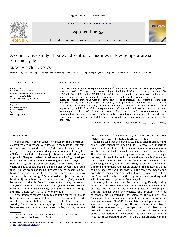摘要
The paper presents an on site experimental study of a low-temperature solar Rankine cycle system for power generation. The cycle performances of pure fluid M(1) (R245fa) and zeotropic mixtures M(2) (R245fa/R152a, 0.9/0.1) and M(3) (R245fa/R152a, 0.7/0.3) are compared, respectively, based on the experimental prototype. The experiments have been conducted under constant volume flow rate of different fluids. The results show that, with the component of R152a increasing, the system pressure level increases and the power output varies accordingly, which provides an additional means of capacity adjustment. The collector efficiency and thermal efficiency of zeotropic mixtures are comparatively higher than pure fluid of R245fa in the experimental condition, which indicates that zeotropic mixtures have the potential for overall efficiency improvement. Due to the non-isothermal condensation of zeotropic mixture, the condensing heat could be partially recovered by adding an external heat exchanger. Thus, compared with pure fluid R245fa the system overall efficiency of zeotropic mixtures could be improved.
- 出版日期2010-11
- 单位天津大学
